
Tel: 020 7620 1818 email: cookandbutler@btconnect.com
Aldersgate Ward Club
www.aldersgatewardclub.org.uk
Annual Luncheon
January 2019, The Livery Hall, Guildhall, London
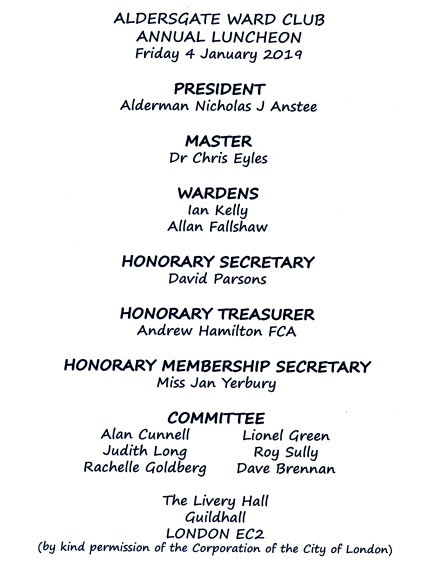

ALDERSGATE
Aldersgate is a ward of the City of
London. named after a gate which was situated 1,265 feet south west of
Cripplegate, and was, according to the opinion of Stow, one of the twelve
original gates of the City. The first gate was built by the Romans during
the 2nd or 3rd centuries, and the road through it probably linked up with
Watling Street, which ran between Dover and St Albans. Some think that it
was constructed after the city wall, possibly as a replacement for the north
gate of the fort.
Its name is open to interpretation. Some believe that the name alludes to
the seniors or old men by whom the gate was built, or to the great number of
Alder trees which formerly grew in the neighbourhood. Maitland observed that
its antiquity is by no means implied in the meaning of the word Alder, but
thought that either of these derivations was more probable than that which
was conferred upon it on account of its age. Alder is also a Saxon word
derived from Aldrich, which in turn is derived from Ealdred (meaning 'old
and wise counsel') so another interpretation is that it is simply the Gate
of Ealdred. Either way it would appear that Aldersgate only acquired its
name in the late Saxon period. and was probably referred to differently by
the Romans.
In 1335 it was resolved that the gate should be covered with lead and a
small house made under it for the gatekeeper. Later the room above became
the workshop of John Day, printer of The Folio Bible ( 1549), Foxe's Book of
Martyrs ( I563), Roger Ascham's Scholemaster (1570) and Tyndale's Works
(1572). Day built considerably on the wall of the City towards the parish
church of St Anne.
In 1603 James I entered London through it for the first time as king.
However, by 1616 the general condition of Aldersgate had deteriorated so
badly that the Lord Mayor, Alderman and Common Council ordered it to be
demolished. It was rebuilt the same year to a design by Gerard Christmas, in
no small part due to William Parker, a Merchant Taylor who had bequeathed
£1,000 towards the expense of a new edifice.
In a large square over the arch of the gate was the figure of James I on
horseback, in the same posture as when he made his entry through the gate in
1603 on his journey to take possession of the Crown. Above his head were
quartered the arms of England, Scotland and Ireland (see front cover and
above illustrations circa 1620 and 1650 respectively).
In 1660 Samuel Pepys recorded seeing the limbs of traitors on the gate.
Aldersgate was damaged during the Great Fire of 1666. but was repaired and
beautified, at the expense of the City, in l670 during the mayoralty of Sir
Samuel Stirling.
The apartments over the gate were appropriated to the use of the Common
Crier of the City; and by the sides of the gate were two posterns for the
convenience of foot passengers. Aldersgate, which stood opposite of what is
now No. 62 Aldersgate Street, was demolished in 1761. However, a
representation remains in the north-end stained glass window of the Old
Library at the Guildhall.

Annual Luncheon
January 2018, The Livery Hall, Guildhall, London
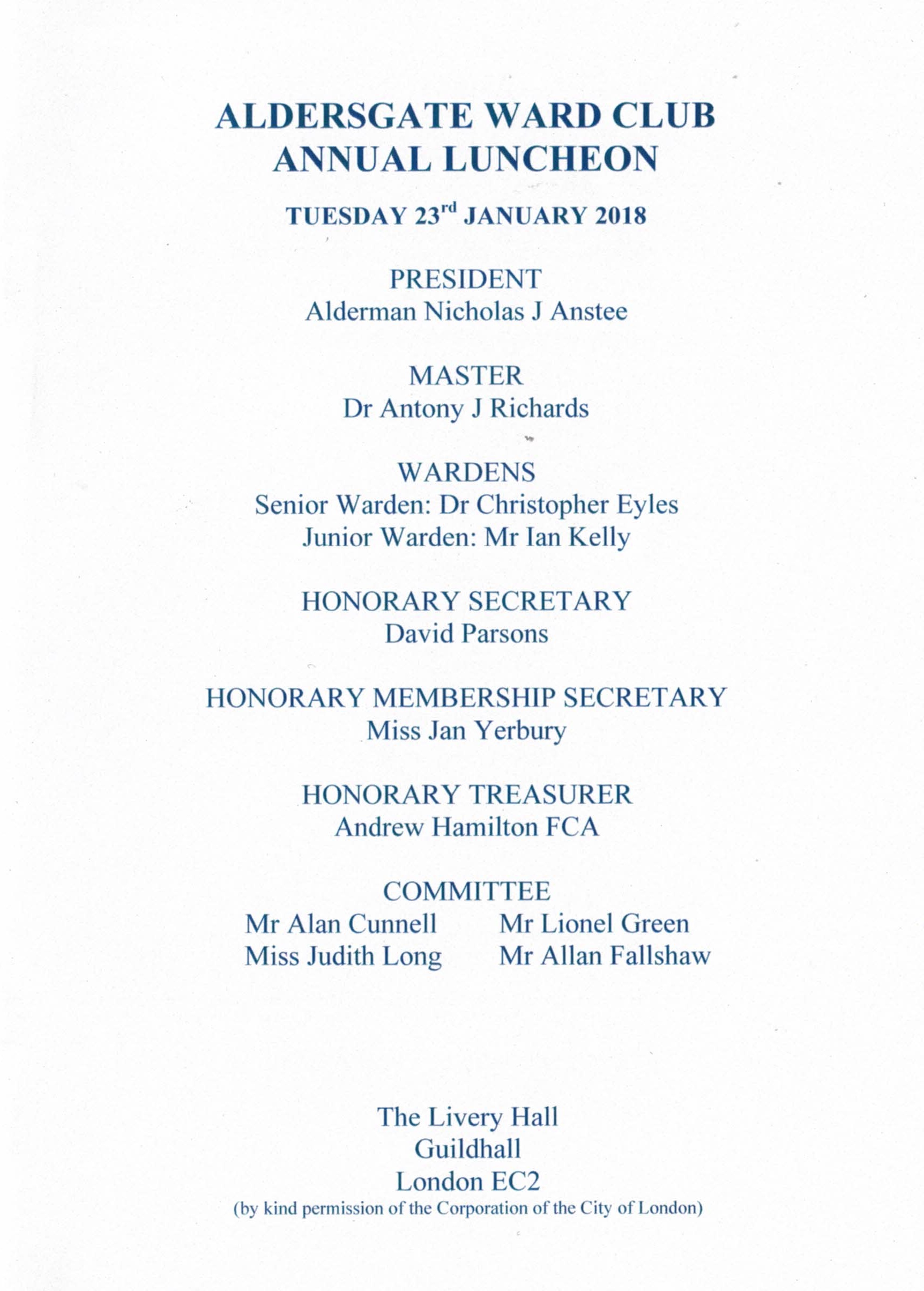
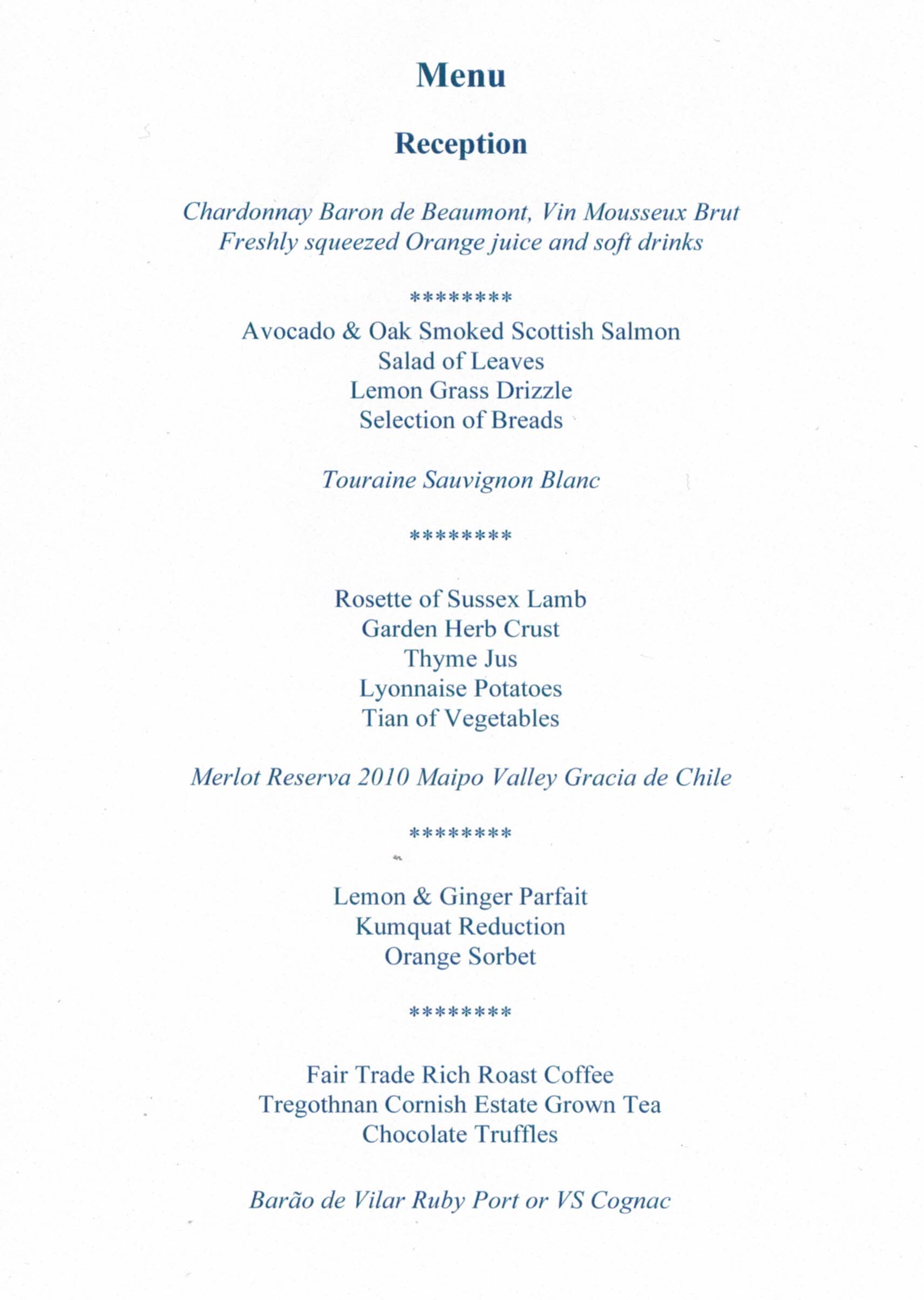

Annual Luncheon
February 2017, The Livery Hall, Guildhall, London

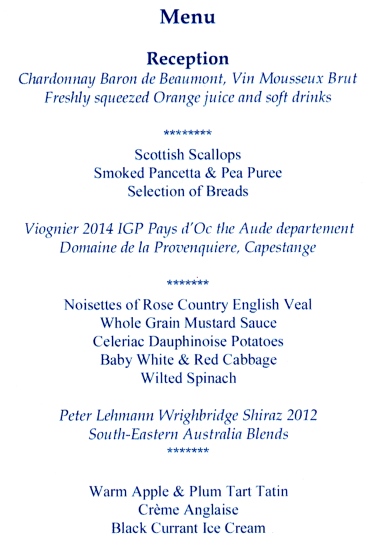
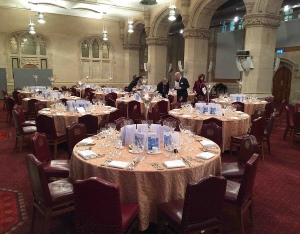
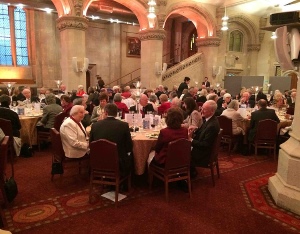
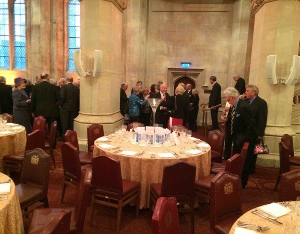
More photos from this event can be viewed at the
Aldersgate Ward Club Annual Luncheon 2017 web page.

Annual Civic Luncheon
January 2016, The Livery Hall, Guildhall, London
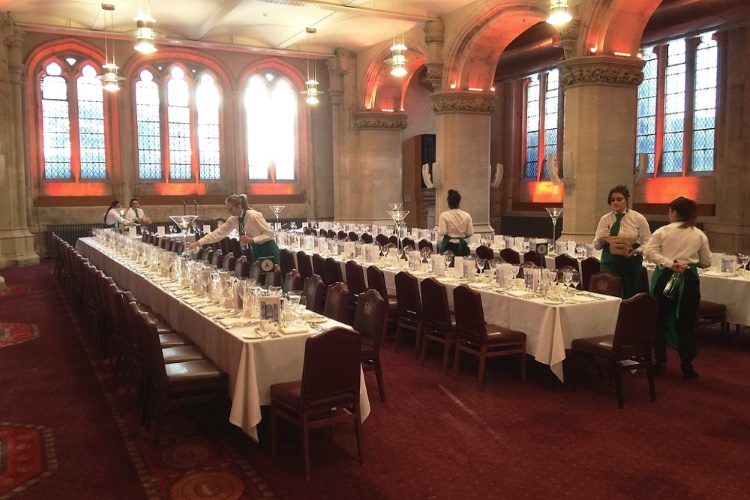
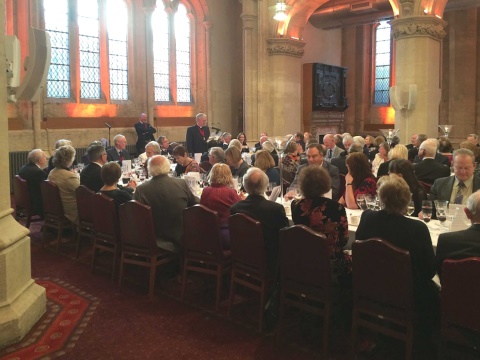
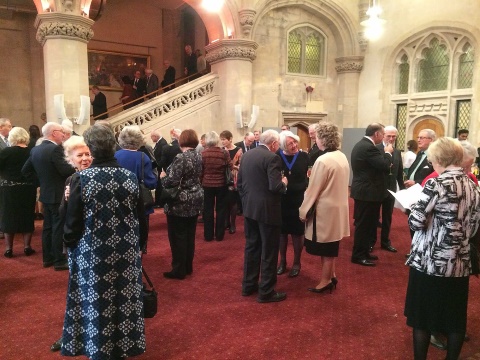
More photos from this event can be viewed at the
Aldersgate Ward Club Civic Luncheon 2016 web page.
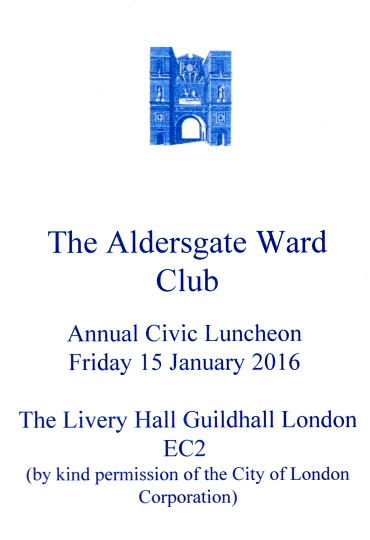


Annual Luncheon
January 2015, The Livery Hall, Guildhall, London
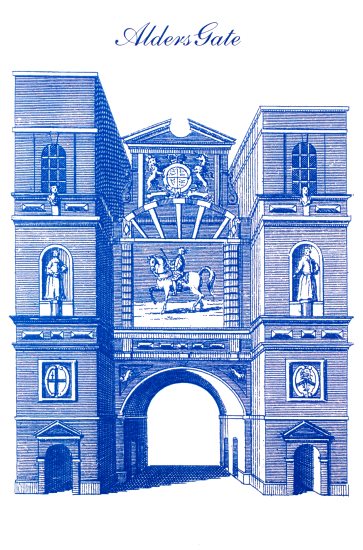


Annual Luncheon
January 2011, The Livery Hall, Guildhall, London
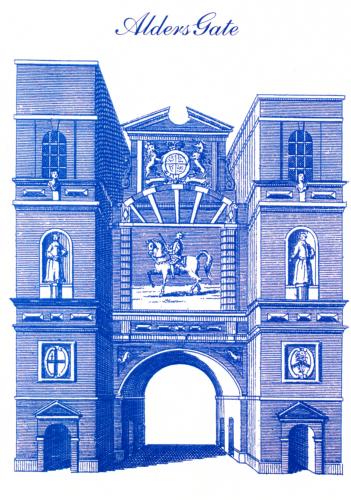
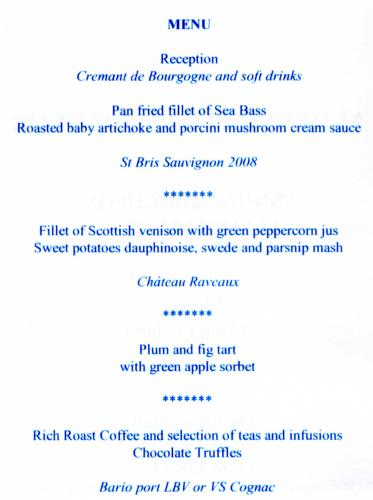

ALDERSGATE
This gate, which was situated 1265 feet south west of
Cripplegate, was according to the opinion of Stow,
one of the original gates of the city.
Maitland observed that its antiquity is by no means implied in the meaning
of the word Alder, which derive from Aldrich, a Saxon; others from seniors
or old men by whom the gate was built, or from the great number of Alder
trees which formerly grew in that neighbourhood. He thought that either of
these derivations is more probable than that which was conferred upon it on
account of its age.
In ancient times this gate was enlarged on several occasions, with
additional building. John Day, an eminent printer
during the reign of Queen Elizabeth I. Lived in this gate and built
considerably on the wall of the City towards the parish church of St. Anne.
The general condition of Aldersgate had deteriorated so badly that the Lord
Mayor, Alderman and Common Council ordered it to be demolished in 1616 and
rebuilt that year, Mr William Parker, a Merchant Taylor having bequeathed
£1000 towards the expense of the new edifice.
In a large square over the arch of the gate was the figure of King James I
on a horseback, in the same posture as when he made his entry through the
gate, on his journey into the City to take possession of the Crown. Above
his head were quartered the arms of England, Scotland and Ireland.
Aldersgate was damaged during the great fire in 1666; but was repaired and
beatified, at the expense of the City in the year 1670, during the mayoralty
of Sir Samuel Stirling.
The apartments over the gate were appropriated to the use of the Common
Crier of the City; and by the sides of the gate were two posterns for the
convenience of foot passengers.
![]()